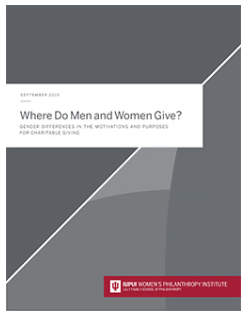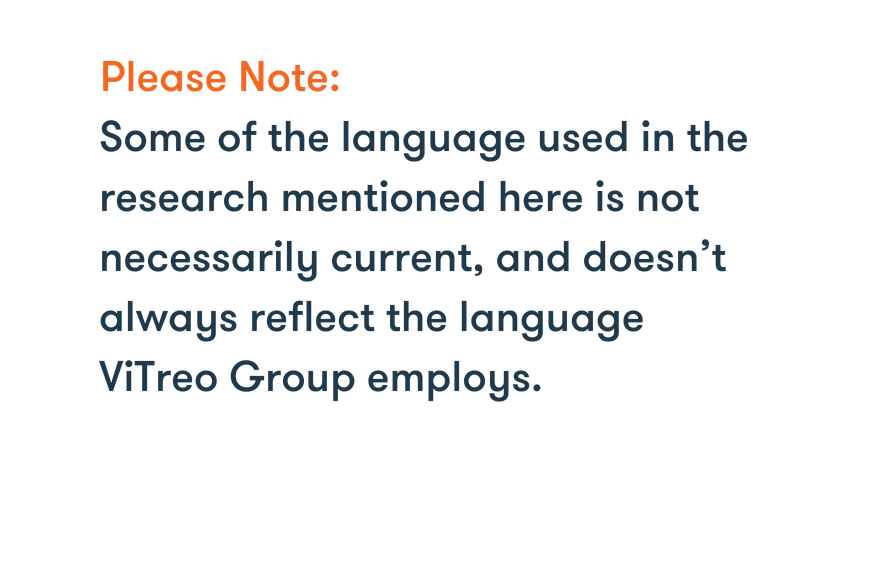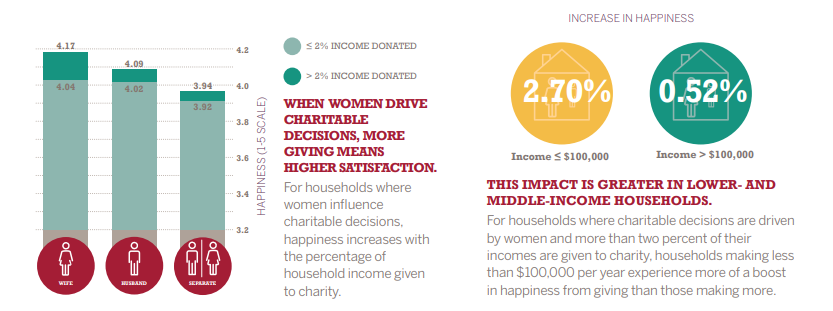THE RISE OF THE FEMALE PHILANTHROPIST - WHAT IS SHE FUNDING?
THE RISE OF THE FEMALE PHILANTHROPIST -
WHAT IS SHE FUNDING?
Andrea McManus, ViTreo Group Inc
November 27th 2018
It’s becoming increasingly critical to understand the priorities and preferences of donors today. In a recent post, I wrote about whether millennials are really disrupting philanthropy, and in what ways we need to alter our approach to them.
In last week’s The Provocateur, I explored whether women give differently than men — the answer is a clear yes. Which takes us to discovering the causes women support. Do men and women place different priorities on social issues; do they support the same causes; is there a difference in how they distribute their giving across charitable sectors?
The Women’s Philanthropy Institute (WPI), which is part of the Indiana University Lilly Family School of Philanthropy, conducts research to grow women’s philanthropy. In its report, Where Do Men and Women Give? Gender Differences In The Motivations and Purposes For Charitable Giving, WPI explored:
HOW MEN’S AND WOMEN’S GIVING VARIED BY CHARITABLE SUBSECTOR
‘Their research found …‘there are significant differences between women and men in the subsectors to which they give. One way of explaining these differences may be to explore the social issues that women and men prioritize as important. While some surveys ask the public about their priority issues, they do not tend to present findings by gender…’
Taken directly from the WPI report, there are some additional interesting findings… ‘Consistent with prior research, we find that —
Single women are more likely than single men to give, and give more to 10 out of 11 charitable subsectors, the exception being the neighborhoods/communities subsector
High net worth single women are more likely to give, and give more to arts and the environment; high net worth single men are more likely to give, and give more to combination organizations (e.g., United Way).
Female-deciding households are more likely to give to youth and family, health, and international causes; male-deciding households are more likely to give to religion, education, and other causes
High net worth female-deciding households are more likely to give to youth and family services and religious causes; male-deciding households are associated with a lower likelihood of giving to basic needs organizations, and give lower amounts to these organizations
Single women spread out their giving more so than single men; however, high net worth single women and men look very similar in terms of the concentration of their giving.’
Next, WPI investigated:
HOW DO MEN AND WOMEN PRIORITIZE KEY ISSUES FACING SOCIETY?
‘Their research discovered… ‘that fundraising appeals that focus on helping others appeal more to women, and that men respond more to appeals that focus on tax breaks and other personal benefits of charitable giving (Brunel & Nelson, 2000). More recently, Willer, et al. (2015) found that, while men are generally less willing to give to poverty relief, their giving increases when the issue is framed as one that affects an entire society (i.e., involving the men’s own self-interest). In a survey of young, wealthy individuals in London, Kottasz (2004) finds that women are more motivated by personal recognition for their giving, whereas men are more motivated by social incentives to give, such as invitations to special events…Only a few surveys include questions on both donor motivations and actual charitable behavior, making this an important area for our research.’ (Lilly Family School of Philanthropy Newest Report)
The research goes on to explore further differences and similarities between giving by men and women.
Inside Philanthropy’s research also supports these findings — read about how a Chicago women’s foundation gives differently. Women Moving Millions (WMM) created a global collective of committed, purposeful women making unprecedented gifts of $1 million or more for the advancement of women and girls. Raising funds as well as their voices, this concept inspired other donors to join with them toward to amplify the voices of women worldwide.
What’s clear to me from this research and more that I’ve done, is that as fundraisers we really need to understand donor motivation and giving priorities. And gender clearly makes a difference. What I’m also seeing is that female and male as well as non-traditional gendered donors want to see their gifts have an impact. And we must always seek to understand, engage and steward donors on an individual basis.
Source: Who’s Giving?
The world is changing and we must change with it. The research I’ve noted here shows a major difference between priorities for women and men. And so we must tailor our approach differently. We must meet the Female Philanthropist where she lives and how she wants to be approached — our traditional methods need to be adapted.
Have you made changes in how you approach your donors? What is your organization doing to engage female donors? I would love to hear what’s been successful, and what hasn’t?
Stayed tuned for The Female Philanthropist — How Do We Get Her Attention?
Part one discussed the Rise Of The Female Philanthropist - Ignore Her At Your Peril. Last week, we discussed, how women and men are different (in their giving). Check back next week as we look at how do we get her attention?
ABOUT THE AUTHOR
Andrea McManus, Chair, Board of Directors, Partner
ViTreo Group Inc
Andrea McManus is a Partner with ViTreo with over 30 years’ experience in fund development, marketing, sponsorship and nonprofit management. A highly strategic thinker and change maker, Andrea has worked with organizations that span the nonprofit sector with particular focus on building long-term and sustainable capacity.









